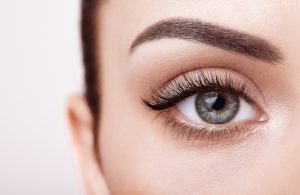Blog /
Face /
Uneven Jawline: Everything You Need To Know
Uneven Jawline: Everything You Need To Know
Many people desire a perfectly symmetrical face, but the truth is, almost everyone has some degree of unevenness, especially when it comes to the jawline.
An uneven jawline, also known as jaw asymmetry, doesn’t just affect appearance; it can also impact chewing, speaking, and even confidence levels. For some, it’s barely noticeable, while for others, it may be a discomfort or self-consciousness.
Whether you’re dealing with mild asymmetry or a more noticeable imbalance, understanding the causes & exploring possible solutions can make a big difference.
Here, we’ll break down the reasons behind an uneven jawline, discuss symptoms & treatments for those seeking improved symmetry and function.
What Is an Uneven Jawline?
An uneven jawline happens when one side of the jaw is different in size, shape, or position from the other side. Sometimes, this difference is so slight that only a doctor can notice it. In more severe cases, it can visibly change your facial structure and impact daily life, such as making it hard to bite, chew, or talk comfortably.
Human faces aren’t meant to be 100% symmetrical. In fact, tiny differences from side to side are entirely natural, and most people won’t notice unless the asymmetry becomes significant.
This asymmetry can be temporary or permanent, and it can be caused by anything from genetics to how you sleep at night.
Common Signs and Symptoms of an Uneven Jawline
Uneven jawline involves paying attention to both visual appearance and physical sensations. Below are the most typical symptoms to watch out for:
- Pain or pressure in the temples.
- Frequent headaches and discomfort in the shoulders or back.
- Jaw joint sensations.
- Ear-related problems like noises in your ears, such as buzzing, ringing (tinnitus), or popping sounds.
- Jaw stiffness and ache.
- Unusual gum and teeth exposure.
- Prominent underbite or small upper jaw.
- Loss of teeth.
- Chewing and biting difficulty.
- Speech and swallowing issues.
- Impaired breathing or mouth breathing.
What Causes an Uneven Jawline?
An uneven jawline can be the result of several different factors. Here are the most common ones:
1. Genetics
The way your jaw develops is often inherited from your family. If your parents, siblings, or close relatives have noticeable jaw differences, you might have a similar pattern. Genetics affect the size, shape, and alignment of your jawbones, making them appear uneven.
2. TMJ Disorders
The temporomandibular joint (TMJ) joins your jaw to your skull. When this joint becomes inflamed or doesn’t work smoothly, it can cause pain, limited movement, and sometimes make your jaw shift to one side more than the other.
3. Uneven Growth and Development
Sometimes, as you grow up, your upper and lower jaws don’t develop at the same pace. Childhood habits like thumb-sucking, long-lasting pacifier use, or tongue thrusting can also affect jaw growth and lead to unevenness as you get older.
4. Trauma or a Broken Jaw
Sports injuries, falls, and accidents can all harm the jawbone. If the jaw heals in an odd position or bone is lost or shifted, the jaw might look slanted or unbalanced.
5. Teeth Misalignment
When your teeth are crowded, missing, or sit at odd angles, your jaws might not line up when you bite down. Over time, your jaw may begin to move slightly to compensate, which may cause or worsen unevenness.
6. Birth Defects
Some people are born with medical conditions that affect their jaw shape or function. For example, a cleft palate or other congenital issues can cause the jawbones to develop differently on each side, which leads to lasting asymmetry.
7. Sleeping Habits
Regularly sleeping on one side of your face or pressing your jaw into a pillow may slowly change the way your jaw rests or grows, especially at a young age. These habits can create subtle differences in jaw shape over time.
8. Chewing on One Side
If you only use one side to chew food, the muscles and bones on that side can become more developed. Over months or years, this can cause one side of your jaw to look larger or more pronounced.
9. Ageing and Facial Fat Distribution
As you get older, changes to your bones and the way fat is distributed in your face can highlight small differences in your jaw that weren’t as noticeable before. Bone loss and sagging skin can make your jawline look more uneven than when you were younger.
How Is an Asymmetrical Jawline Diagnosed?
Diagnosing an uneven jawline involves more than just looking in the mirror for asymmetry. It requires understanding why the jawline appears uneven, whether it’s due to structural issues, muscle differences, or another reason. Here’s how professionals usually approach this:
- Visual Exam: A specialist checks your face for visible asymmetry and imbalance.
- Jaw Movement Test: You may be asked to open, close, or move your jaw side to side to check for pain, stiffness, or clicking.
- Bite Check: They’ll look at how your upper and lower teeth align (overbite, underbite, crossbite, etc.).
- TMJ Assessment: The jaw joint is examined for tension, discomfort, or dysfunction.
- Imaging: X-rays or 3D scans (like CBCT) show detailed views of jawbones, joints, and teeth alignment.
- Digital Scans or Moulds: Sometimes used to analyse your bite more accurately.
- Medical History & Habits: They’ll ask about teeth grinding, past injuries, one-sided chewing, or sleep positions.
How to Fix Asymmetrical Jawline? – Treatment Options
Non-Surgical Solutions
If you’re not ready for surgery but want more than just exercises or habit changes, there are a few treatments that sit in the middle. They’re less invasive and still deliver noticeable results.
1. Botox
Botox is a popular choice when one side of your jaw is more muscular than the other. It works by relaxing the overactive masseter muscle, which can slim and balance out the lower face.
It doesn’t affect bone or fat, but if your asymmetry is caused by muscle bulk, often from clenching or chewing on one side, it can make a visible difference.
Results typically last 4 to 6 months, and touch-ups are easy to maintain.
2. Dermal fillers
Dermal fillers can be used to add volume to areas where the jawline looks weaker or smaller.
If one side of your jaw appears sunken or less defined, fillers can help sculpt a more balanced look. They’re often used along the jaw angle or chin and offer immediate results with minimal downtime.
While they’re not permanent, they usually last anywhere from 6 months to a year, depending on the product used.
3. FaceTite
FaceTite shapes the lower face and tightens loose skin using radiofrequency energy. It works below the surface by melting small fat deposits and stimulating collagen production.
This can help reshape a jawline that’s uneven due to sagging, excess fat, or soft tissue imbalance. It’s especially useful if your asymmetry isn’t from bone or muscle, but from skin laxity or age-related changes.
The procedure is done under local anaesthesia with minimal downtime.
Surgical Options
If your jaw asymmetry is caused by bone structure, and it’s severe or causing functional problems, surgery might be needed.
1. Orthognathic Surgery (Jaw Surgery)
Jaw surgery corrects skeletal and dental irregularities. The jawbone is repositioned to create better alignment. It’s a major surgery and often done in combination with orthodontic treatment.
Ideal for:
- Severe underbite, overbite, or crossbite.
- Facial asymmetry with TMJ problems.
- Post-traumatic deformities.
2. Chin Augmentation or Reduction (Genioplasty)
Sometimes the chin is the main reason the jaw looks uneven. Chin implants or bone contouring can help restore balance to the lower face.
This surgery can be done alone or alongside jaw surgery, depending on the situation.
3. Facial Implants
Facial implants are used to enhance and reshape areas like the jawline, chin, or cheeks to create better facial balance. Made from materials such as silicone or Medpor, these implants help add structure and volume where it’s lacking.
They’re especially useful when asymmetry is caused by underdeveloped or uneven bone structure. The implants are placed through small incisions, either inside the mouth or on the skin near the treatment area, depending on the location. Once healed, they provide long-lasting results and can make a significant difference in overall symmetry.
How to Fix Asymmetrical Jaw Through Lifestyle Changes?
In many mild to moderate cases, small changes in your daily habits can make a real difference over time. These changes won’t reshape bone, but they can improve muscle balance, reduce strain, and stop things from getting worse.
1. Chew Evenly on Both Sides
Preferring one side when chewing builds muscle unevenly. Try to switch sides regularly to balance out muscle use and reduce tension that can pull the jaw off-centre over time.
2. Fix Your Posture
Slouching or tilting your head affects jaw alignment. Keeping your spine and neck in a neutral position helps reduce uneven strain on facial muscles and supports better jaw symmetry.
3. Avoid Sleeping on One Side Only
Sleeping on one side consistently can shift facial fat and compress tissue. Alternate sides or sleep on your back to minimise uneven pressure and maintain facial balance.
4. Be Aware of Clenching or Grinding
When you grind your teeth, one side of your jaw may have to work harder than the other. Using a night guard and reducing stress can help prevent uneven muscle growth and lower long-term strain on your jaw.
5. Treat Any Underlying Dental Issues
Missing or damaged teeth can lead to uneven chewing and muscle strain. Regular dental visits help identify these issues early and keep your bite and jaw aligned.
Exercises to Get Rid of Asymmetrical Jawline
Here are a few simple movements you can practise regularly:
1. Chin Tucks
Sit or stand up straight. Slowly pull your chin back, as if you are making a double chin, while keeping your head level. Take a few seconds to hold this position, then release.
This exercise works the deep muscles in your neck and jaw, which helps improve your posture and jaw alignment.
2. Jaw Resistance Movements
Place your hand under your chin or on the side of your jaw and gently resist as you try to open or shift your mouth. This controlled resistance helps build strength and balance in the jaw muscles on both sides.
3. Facial Yoga
Include facial movements like exaggerated chewing, puffing air from cheek to cheek, or wide symmetrical stretches. These exercises activate and tone various facial muscles, which promotes better symmetry and control across your lower face and jawline.
Conclusion
An uneven jawline can be a concern, but most cases are mild and manageable. Knowing the causes of jaw asymmetry helps you make informed choices about treatment and self-care. Getting help early can correct or improve most issues, making your jawline look and function better.
Frequently Asked Questions
1. Does having an uneven jawline affect health?
Yes, if severe, it can impact eating, speech, breathing, and even cause chronic pain.
2. Can braces fix a crooked jaw?
Braces or aligners can correct jaw position if misalignment is due to teeth. Severe skeletal problems may require surgery.
3. Is surgery necessary for an uneven jawline?
No, most people do not need surgery. Only those with severe, functional, or distressing problems should consider it. Many people can find help through non-surgical options.
4. How long does it take for jaw exercises to start showing results?
It can take weeks to months to see results, and the changes can vary. Most noticeable improvements come from professional help rather than from exercises alone.































